Using Earthbags To Make a Root Cellar (Plus 10 How-To Steps)
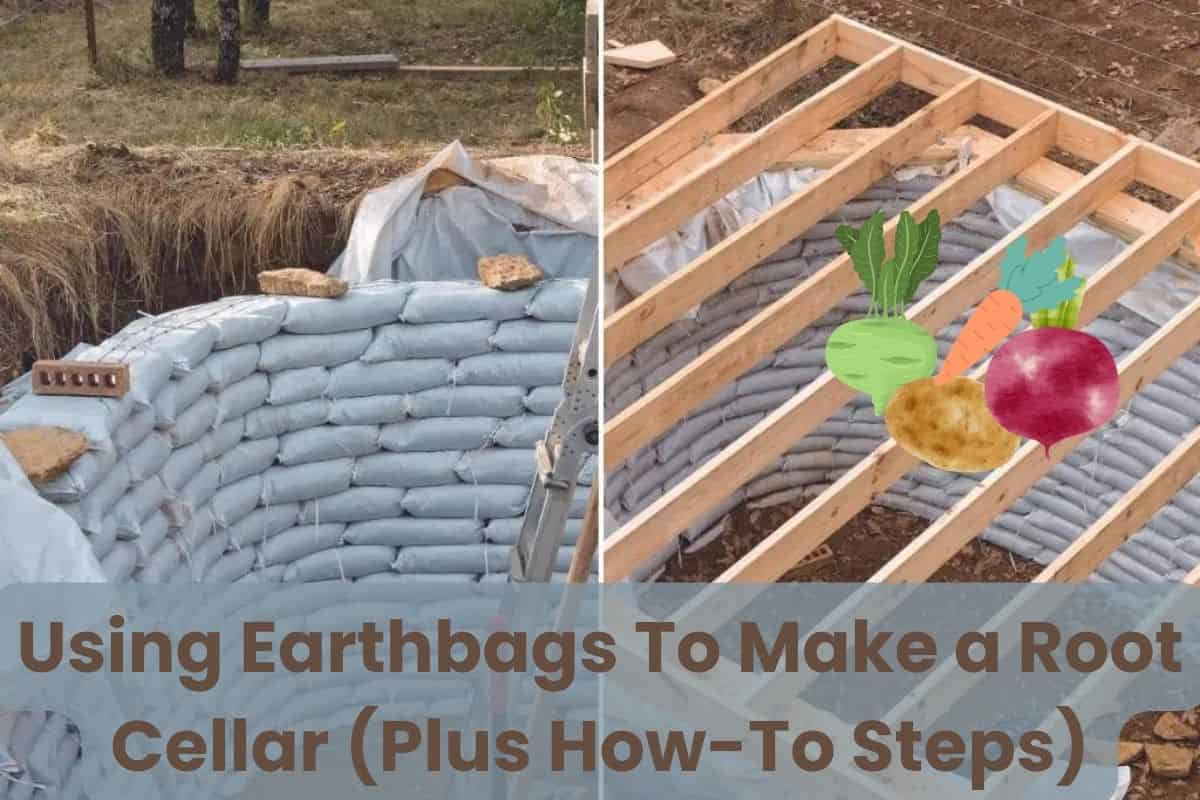
Image courtesy of PRACTICAL SELF RELIANCE.
Have you ever wondered how to make a root cellar that uses natural materials?
As sustainable building makes new progress, you might need some help understanding how to create a root cellar that is cost-effective, environmentally friendly, and ethical.
Creating a root cellar with earthbag walls uses readily available renewable building materials. Earthbags contain a mixture of sand and clay that are tamped and stacked together to form solid structures. They are easy to work with and low cost but quite labor-intensive.
In this guide, I will explain step-by-step how you should go about using earthbags to make a root cellar.
While this task may seem daunting, you will likely find these instructions informative and helpful (and maybe just a little simpler than you initially thought).
For information about where to buy earthbag building supplies, read our article “The 8 Best Places To Buy Your Earthbag Building Supplies.”
Benefits Of Using Earthbags To Make a Root Cellar
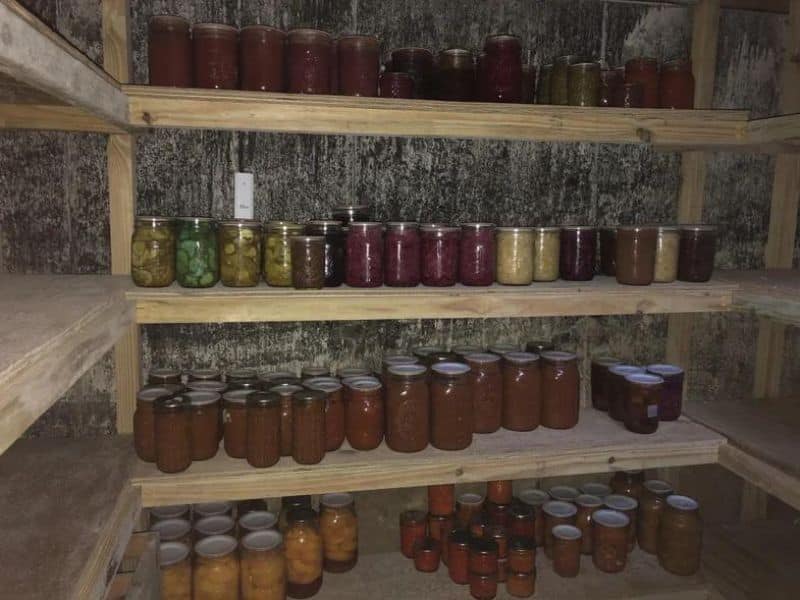
Earthbags are dynamic and versatile materials used for natural buildings that focus on sustainability.
Earthbags are widely used for sustainable housing, quick disaster relief, and flood control, and this construction method is undergoing something of a renaissance today among homeowners.
A root cellar stores fruits and vegetables underground using natural preservation methods. Root cellars use natural refrigeration by storing produce at a consistently cool temperature using the Earth’s insulation properties.
Keeping produce in a root cellar will make it last much longer without expensive electrical refrigeration.
Carefully controlled conditions are required to keep your produce for the longest time in a root cellar. According to Farmer’s Almanac, the most important are; a high humidity level between 85%-95%, a consistent temperature between 32°F and 40°F, and a robust ventilation system that circulates air.
There are several advantages to choosing earthbags against other types of materials:
- Cost-effective – polypropylene bags are extremely cheap.
- Sustainable – earthbag walls will last a very long time.
- Earthbags are natural insulators because they are filled with soil.
- Easy to work with compared to materials.
- Locally Sourced, suitable soil is usually found on your property.
How Do You Construct an Earthbag Root Cellar?
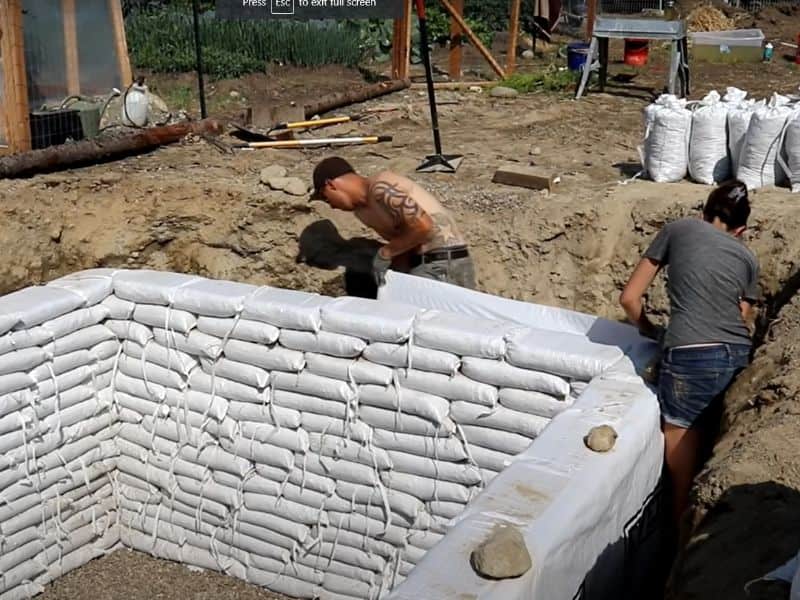
It is essential to research your area’s legal requirements and building codes. It might be beneficial to consult an expert if there is still uncertainty in the building process.
Creating an Earthbag Root Cellar Requires the Following Steps:
1. Research and Prepare the Site: Pick a spot for the root cellar that is convenient to access, has good drainage, and is far from any areas that can flood or contain water.
If required, level the ground and remove any debris from the site. It is crucial to pick a suitable location for your root cellar so that severe weather events will not affect it. Higher ground away from rivers and lakes is often a safer bet.
2. Choose a Functional Design: Choose the root cellar’s size and design, considering the amount of produce to be stored inside, ventilation, insulation, and the available space for people to access the cellar and move around inside it.
The geography and location of the site will play a part in the design form, and so will the type of materials you are using to construct the root cellar.
3. Excavate the Site for the Root Cellar: Dig a hole that is the desired size for the root cellar in terms of depth and width.
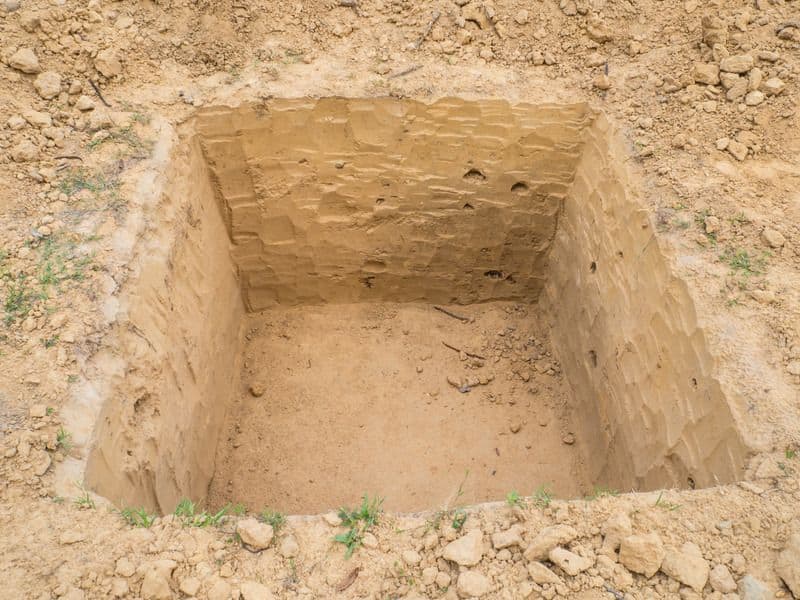
During the excavation process, it is crucial to account for the thickness of the earthbag walls and how much space the earthbags will take up. The hole must be larger than the root cellar’s final size for these reasons.
4. Create a Solid Foundation: Level the ground with a tamper after removing the dirt. Root cellars traditionally have a dirt floor that helps raise the humidity level.
Instead, laying a gravel or crushed rock base will help create a solid foundation for the structure. A gravel or crushed rock floor will also improve drainage and prevent water from building up in the root cellar.
5. Build the Root Cellar Structure with Earthbags: Fill the earthbags with the excavated soil dug for the foundation. Make sure the soil is the right composition for the earthbags, avoiding large stones, pieces of wood, or other unsuitable material from the ground that could accidentally get into the earthbags.
To create a sturdy, robust structure, compact the earthbags well and make sure the bags are tied securely. Using two strands of barbed wire between each layer is essential to keep the bags in position.
The next layer is stacked on the barbed wire to hold the structure in place as you build the walls of the root cellar. Tamp down every layer of earthbags to maintain the integrity of the wall.
6. Construct an Appropriate Roof for the Root Cellar: The roof will depend on the design type and shape. Some cellars are built deeper underground or into the hillside.
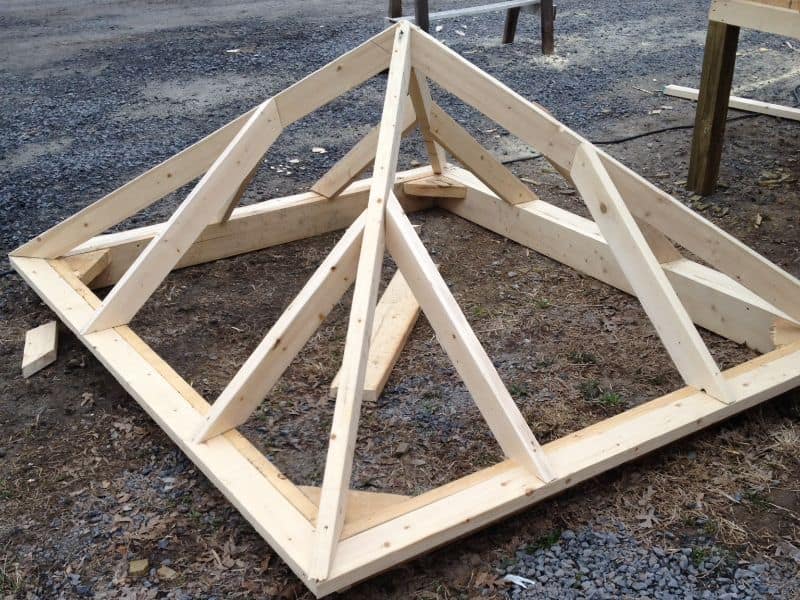
In contrast, others might require more traditional supports, such as wooden beams or braces, to support the ceiling. Using materials like corrugated metal, grass, sod, or other plant materials to help build the roof of the root cellar can be effective, too.
7. Insulate the Root Cellar: Soil is a poor insulator; at under six feet, the temperature will usually stay the same. However, adding extra insulation in certain climates will help keep the root cellar’s interior at a constant temperature by insulating its walls and ceiling.
Compacting dirt outside and on top of the root cellar will also help add another layer of insulation.
8. Create a Functional Ventilation System: Install vents to allow fresh air flow and prevent mold or mildew growth. A good choice is to run 4-inch PVC exhaust piping to provide enough ventilation to flow through the root cellar.
I recommend having an intake vent near the floor to allow air to flow into the cellar and placing another vent near the ceiling to allow it to leave.
9. Plaster the Interior and Exterior of the Root Cellar: As an extra step, you can plaster the earthbag wall with natural plaster, depending on your available soil type.

The best mixture for plastering is clay, sand, and soil, giving the classic earthbag look in the root cellar. Lime plastering is also a popular choice, but it will depend if you have the necessary materials.
10. Add Finishing Touches: Install a door or any other access points you may need. Windows can be helpful if you require natural light in the root cellar. Finally, add shelves and storage compartments to store your produce.
Final Thoughts On Earthbag Building For Root Cellars
Using earthbags is a sustainable and cheap way to create a root cellar.
In comparison, many other methods will require non-natural materials that are not environmentally friendly.
Creating an earthbag root cellar is a cost-effective measure that will benefit you for many years.
If you fancy going even further than this article and building an entire home from earthbags, you might want to hire a contractor to help design and build it. We’ve written an article to help you find a good firm: “Check Out These 3 Earthbag Home Builders In The USA.”







